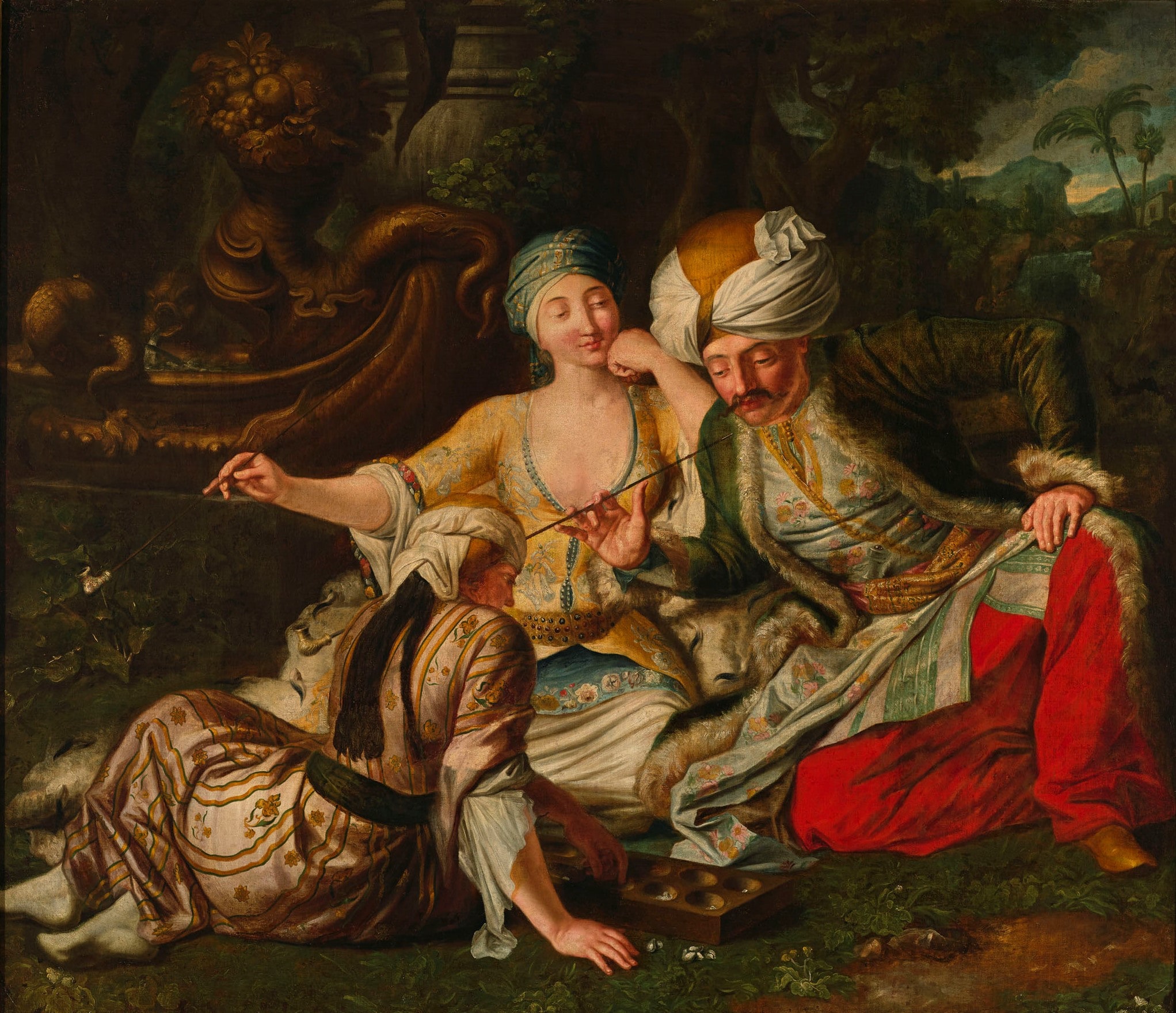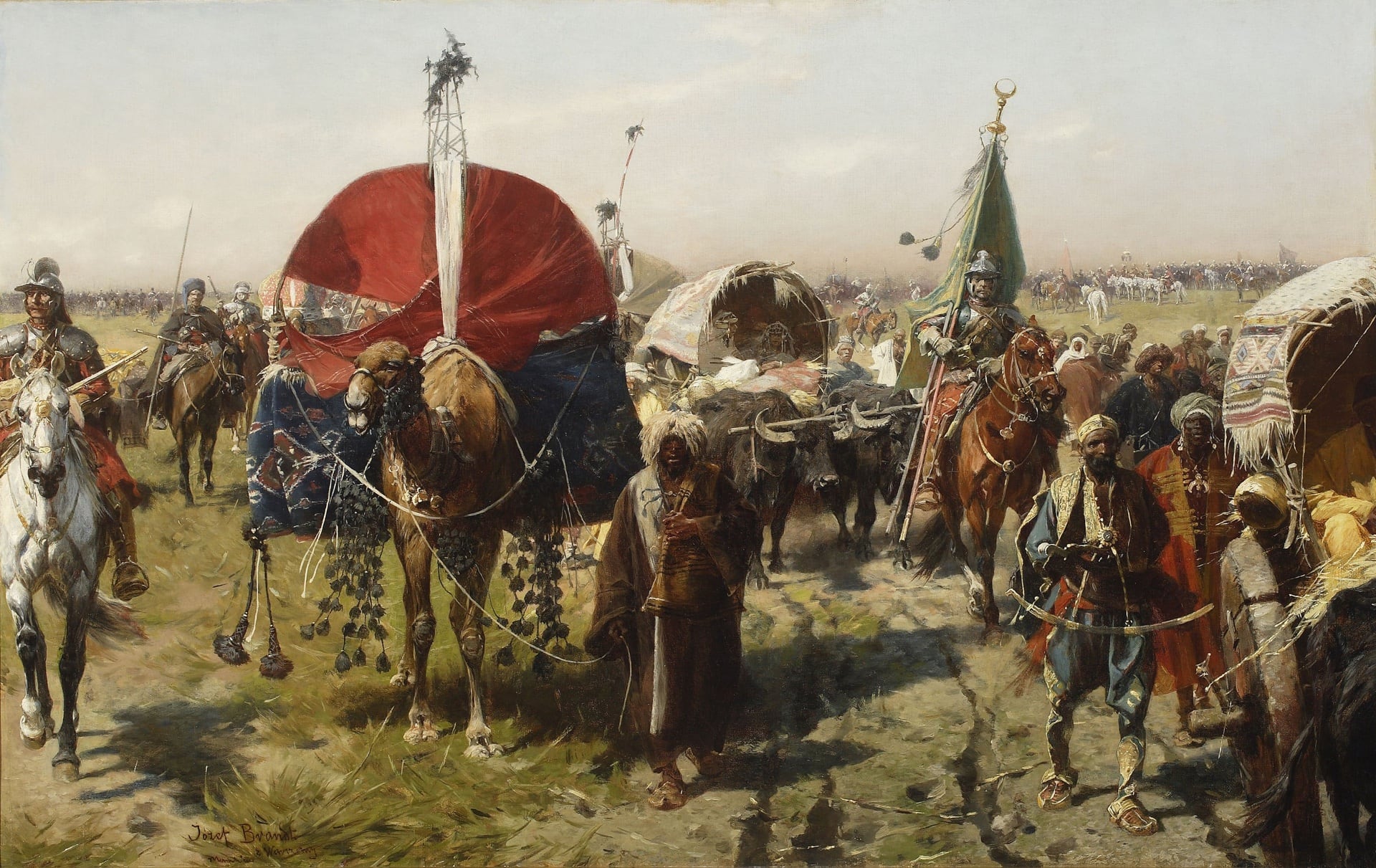24 October 2014

“Game of Mangala”, Johann Samuel Mock, First half of the 18th century.
Oil on canvas, 172 X 195,5 cm. The Royal Castle in Warsaw.
Three figures in Eastern dress are shown in repose against an exotic landscape, smoking pipes and playing mangala. Inventories of the royal collections from 1739 identify the members of this group as the royal eunuch Matthias and two odalisques. The rococo otium is set in a saray garden. The general remove from the bustle of daily life is combined with intellectual exercise in the form of a game of mangala (Arabic manqala) in which pebbles or shells are arranged in accordance with the rules of logic on a board with twelve round recesses, or “homes”. Mangala appears in European compositions from the 1740s by artists such as Giovanni Antonio Guardi (Two Odalisques Playing Mangala in the Harem, now at the Museum Kunstpalast in Düsseldorf) and in the drawings produced by Jean-Étienne Liotard during his sojourn in Istanbul (e.g. Two European Women in Turkish Dress Seated on a Carpet and Playing Mangala, British Museum). Such images sat well with the idealised conception of the Orient as a realm of sensual arousal, repose, and unending pleasure.
The fashion for Turquerie prevailing at European courts in the 18th century also yielded musical and theatrical works drawing upon Turkish motifs. The court of King August II was the venue for masquerades and social gatherings in Oriental-themed fancy dress whose participants could pay at living in faraway lands. The king’s affinity for the exotic also found its expression in four stylised genre scenes adorning his Saski Palace among which the present painting was included. The royal porcelain works in Meissen decorated its wares on the basis of engravings illustrating the accounts of Charles de Ferriol, French ambassador to the Ottoman court. Published in 1714, de Ferriol’s tales of his time in Turkey were lavishly illustrated with engravings based on the paintings of Jean-Baptiste Vanmour, who accompanied the French diplomat on his mission to Constantinople. The first French translation of the Tales of a Thousand and One Nights (also known in the West as The Arabian Nights), completed by Antoine Galland in 1704, also fell on fertile ground with the general public.
Aleksandra Janiszewska

Józef Brandt harboured a fascination for the history of 17th century Poland, and his favourite themes included ballistic scenes and genre scenes before and after the battle proper –all and sundry marches, returns, supply trains, billets and encampments, patrols, and similar motifs illustrating the drudgery of warfare outside of its culminating moments.

Henryk Weyssenhoff, author of landscapes, prints, and illustrations, devoted much of his creative energies to realistic vistas of Belorussia, Lithuania, and Samogitia. A descendant of an ancient noble family which moved east to the newly Polonised Inflanty in the 17th century, the young Henryk was raised to cherish Polish national traditions.
Tuesday - Saturday 10:00 - 19:00
Friday 10:00 - 22:00
Sunday 12:00 - 18:00
The museum is closed on Mondays.
On Wednesdays, the students can
visit the museum free of admission.
Full ticket: 300 TL
Discounted: 150 TL
Groups: 200 TL (minimum 10 people)